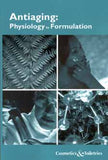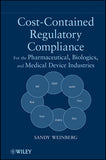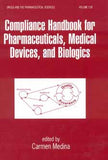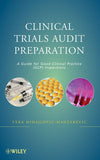Organic Chemistry An Acid-Base Approach By Michael B. Smith 3rd Edition
Copyright Year 2022
3rd Edition
Book Description
Based on the premise that many, if not most, reactions in organic chemistry can be explained by variations of fundamental acid–base concepts, Organic Chemistry: An Acid–Base Approach provides a framework for understanding the subject that goes beyond mere memorization. Using several techniques to develop a relational understanding, it helps students fully grasp the essential concepts at the root of organic chemistry.
This new edition was rewritten largely with the feedback of students in mind and is also based on the author’s classroom experiences using the previous editions.
Highlights of the Third Edition Include:
- Extensively revised chapters that improve the presentation of material.
- Features the contributions of more than 65 scientists, highlighting the diversity in organic chemistry.
- Features the current work of over 30 organic chemists, highlighting the diversity in organic chemistry.
-
Many new reactions are featured that are important in modern organic chemistry.
-
Video lectures are provided in a .mov format, accessible online as a ‘built-in’ ancillary for the book.
-
The homework is available online, gratis to all users.
The third edition of Organic Chemistry: An Acid–Base Approach constitutes a significant improvement upon a unique introductory technique to organic chemistry. The reactions and mechanisms it covers are the most fundamental concepts in organic chemistry that are applied to industry, biological chemistry, biochemistry, molecular biology, and pharmacy. Using an illustrated conceptual approach rather than presenting sets of principles and theories to memorize, it gives students a more concrete understanding of the material.
Table of Contents
Chapter 1: Introduction
1.1. A Brief History of Organic Chemistry
1.2. The Variety and Beauty of Organic Molecules
Chapter 2: Why Is an Acid-Base Theme Important?
2.1. Traditional Acid and Base Theory
2.2. There are Two Acid-Base Definitions: How Are They Related?
2.3. Acid-Base Equilibria and Equilibrium Constants
2.4. Electronegativity and Atom Size
2.4.A. Electronegativity
2.4. B. Atom Size
2.5. Atom Size and Electronegativity Arguments Applied to Acids and Bases
2.6. Resonance, Electron Dispersion and Base Strength
2.7. Lewis Acids and Bases
2.8. Why Is Acid–Base Chemistry a Theme for Organic Chemistry?
2.9. Biological Relevance
Correlation of Homework with Concepts
ANSWERS TO IN-CHAPTER QUESTIONS
HOMEWORK
Chapter 3: Bonding
3.1. Atomic orbitals and Electrons
3.1.A. Atomic Orbitals
3.1.B. Electronic Configuration
3.2. Ionic versus Covalent Chemical Bonds
3.3. Covalent Bonds
3.4. Linear Combination of Atomic Orbital (LCAO) Model
3.5. Tetrahedral Carbons and sp3 Hybridization
3.5.A. The Experimentally Determined Structure of Methane
3.5.B. Electron Promotion and sp3 Hybridization
3.5.C. The Hybrid Carbon Model of sp3-Hybrid Orbitals
3.6. The Valence Shell Electron Pair Repulsion (VSEPR) Model
3.7. Breaking Covalent Bonds
3.8. Carbon Bonded to Heteroatoms
3.8.A. A Covalent Bond Between Carbon and a Heteroatom: Bond Polarization
3.8.B. Bond Polarity, Bond Moments, and Bond Strength
Correlation of Homework with Concepts
ANSWERS TO IN-CHAPTER QUESTIONS
HOMEWORK
Chapter 4: Alkanes, Isomers, and an Introduction to Nomenclature
4.1. Alkanes
4.2. Structural Variations of Alkane Hydrocarbons
4.2.A. Straight-chain and Branched Alkanes
4.2.B. Isomers
4.3. The IUPAC Rules of Nomenclature
4.3.A. Prefixes and Simple Alkanes
4.3.B. Common Names
4.3.C. Halogens are Substituents
4.3.D. Multiple Substituents
4.3.E. Complex Substituents
4.4. Rings Made of Carbon: Cyclic Compounds
4.5. The Acid or Base Properties of Alkanes
4.6. Combustion Analysis and Empirical Formulas
4.7. Commercial and Biological Relevance
Correlation of Homework with Concepts
ANSWERS TO IN-CHAPTER QUESTIONS
HOMEWORK
Chapter 5: Functional Groups
5.1. -Bonds. The C=C Unit and Alkenes
5.2. -Bonds. The CºC Unit and Alkynes
5.3. Hydrocarbons With Several -Bonds
5.4. Terpenes
5.5. Heteroatom Functional Groups
5.5.A. Alcohols and Thiols
5.5.B. Ethers and Dithioethers (Sulfides)
5.5.C. Amines
5.6. Functional Groups With Polarized -Bonds
5.6.A. The Carbonyl Functional Group, C=O
5.6.B. Ketones and Aldehydes
5.6.C. Carboxylic Acids, Carboxylic Anions and Resonance
5.6.D. Double and Triple Bonds to Nitrogen
5.7. Acid-Base Properties of Functional Groups
5.8. Physical Properties and Intermolecular Forces
5.8.A. Boiling Point
5.8.B. Solubility
5.8.C. Melting Point
5.9. Benzene: A Special Cyclic Hydrocarbon
5.10. Biological Relevance
Correlation of Homework with Concepts
ANSWERS TO IN-CHAPTER QUESTIONS
HOMEWORK
Chapter 6: Acids, Bases, and Nucleophiles
6.1. Acid-Base Equilibria
6.2. Carboxylic Acids and Sulfonic Acids
6.2.A. Carboxylic Acids
6.2.B Sulfonic Acids
6.3. Factors That Influence the Strength of a Carboxylic Acid
6.3.A. Stability of the Conjugate Base
6.3.B. Inductive Effects
6.3.C. Solvent Effects
6.4. Alcohols Are Amphoteric
6.5. Amines
6.6. Carbon Acids
6.6.A. Terminal Alkynes Are Weak Acids
6.6.B. -Hydrogen Atoms and Carbonyls
6.7. Organic Bases
6.7.A. Amines
6.7.B. Alcohols Are Bases
6.7.C. Ethers Are Bases
6.7.D. Carbonyl Compounds Are Bases
6.7.E. Alkenes and Alkynes Are Bases
6.8. Lewis Acids and Bases
6.9. Nucleophiles
6.10. Biological Relevance
Correlation of Homework with Concepts
ANSWERS TO IN-CHAPTER QUESTIONS
HOMEWORK
Chapter 7. Chemical Reactions, Bond Energy, and Kinetics
7.1. A Chemical Reaction
7.2. Reactive Intermediates
7.2.A. Carbocations (Carbenium ions)
7.2.B. Carbanions
7.2.C. Radicals
7.3 Formal Charge
7.4. Free Energy: Enthalpy and Entropy
7.5. Bond Dissociation Enthalpy and Reactions
7.6. Transition States
7.7. Competing Reactions
7.8. Reversible Chemical Reactions
7.9. Reaction Curves and Intermediates
7.10. Mechanisms
7.11. Kinetics
7.11.A. Reaction Rate and First-Order Reactions
7.11.B. Second-Order Reactions
7.11.C. Half Life
7.11.D. No Reaction
7.12. Biological Relevance
Correlation of Homework with Concepts
ANSWERS TO IN-CHAPTER QUESTIONS
HOMEWORK
Chapter 8: Conformations
8.1. Rotation Around C—C Bonds
8.1.A. Staggered and Eclipsed Rotamers
8.1.B. Torsional Strain: Steric Hindrance and Energy Barriers
8.2. Longer Chain Alkanes
8.3. Influence of Heteroatoms on the Rotamer Population
8.3.A. Halogen Substituents
8.3.B. OH or NH Groups in Alcohols or Amines
8.4. Introducing -Bonds
8.5. Cyclic Alkanes
8.5.A. Strain and Steric Hindrance in Cyclic Alkanes
8.5.B. Conformations of C3–C5 Cycloalkanes
8.5.C. Conformationally Mobile Cyclohexane
8.6. Substituted Cyclohexanes. A1,3-Strain
8.7. Large Rings
8.8 Cyclic Alkenes
8.9. Biological Relevance
Correlation of Homework with Concepts
ANSWERS TO IN-CHAPTER QUESTIONS
HOMEWORK
Chapter 9: Stereoisomers: Chirality, Enantiomers, and Diastereomers
9.1. Stereogenic Carbons and Stereoisomers
9.2. Absolute Configuration [(R) and (S) Nomenclature]
9.3. Specific Rotation: A Physical Property
9.4. Circular Dichroism
9.5. Diastereomers
9.6. Alkenes
9.7. Cis and Trans Substituents Attached to Rings
9.8. Stereogenic Centers in Cyclic Molecules
9.9. Stereogenic Centers in Bicyclic Molecules
9.10. Optical Resolution
9.11. Biological Relevance
Correlation of Homework with Concepts
ANSWERS TO IN-CHAPTER QUESTIONS
HOMEWORK
Chapter 10: Acid–Base Reactions of -Bonds: Addition Reactions
10.1. Carbocation Stability
10.2. Alkenes React With Brønsted-Lowry Acids
10.3. Carbocation Rearrangements
10.4. Hydration Reactions of Alkenes
10.5. Alkenes React With Dihalogens
10.5.A Dihalogenation
10.5.B. Diastereoselectivity in the Dihalogenation Reaction of Alkenes
10.5.C. Reaction With Aqueous Solutions of Halogens (Hypohalous Acids)
10.6. Alkenes React With Borane
10.7. Alkenes React With Mercury(II) Compounds
10.8. Alkynes React as Bases
10.8.A. Reaction With Brønsted-Lowry Acids
10.8.B. Hydration of Alkynes
10.8.C. Dihalogenation of Alkynes
10.8.D. Hydroboration of Alkynes
10.8.E. Oxymercuration of Alkynes
10.9. Metathesis
10.10. Non-Ionic Reactions: Radical Reactions
10.11. Polymerization
10.12. Organization of Reaction Types
10.13. Biological Relevance
Correlation of Homework with Concepts
ANSWERS TO IN-CHAPTER QUESTIONS
HOMEWORK
Chapter 11: Substitution Reactions
11.1. Alkyl Halides, Sulfonate Esters, and the Electrophilic C—X Bond
11.2. The SN2 Reaction
11.2.A. Nucleophilic Approach to an Electrophilic Carbon
11.2.B. Reaction Rate and Energy Requirements
11.2.C. The Role of the Solvent
11.3. Functional Group Transformations Via the SN2 Reaction
11.4. The SN1 Reaction
11.5. Substitution Reactions of Alcohols
11.5.A. Alcohols React With Mineral Acids
11.5.B. Sulfur and Phosphorous Halide Reagents
11.5.C. Mitsunobu Reaction
11.6. Reactions of Ethers
11.6.A. Ethers React as Brønsted–Lowry Bases
11.6.B. Reactions of Epoxides
11.7. Free Radical Halogenation of Alkanes
11.8. C—H Substitution
11.9. Organization of Reaction Types
11.10. Biological Relevance
Correlation of Homework with Concepts
ANSWERS TO IN-CHAPTER QUESTIONS
HOMEWORK
Chapter 12: Elimination and p-Bond-Forming Reactions
12.1. Bimolecular Elimination
12.2. Stereochemical Consequences of the E2 Reaction
12.3. The E2 Reaction in Cyclic Molecules
12.4. Unimolecular Elimination: The E1 Reaction
12.5. Intramolecular Elimination
12.6. Elimination Reactions of Vinyl Halides: Formation of Alkynes
12.7. Substitution versus Elimination
12.8. Strength and Limitations of the Simplifying Assumptions
12.9. Organization of Reaction Types
12.10. Biological Relevance
Correlation of Homework with Concepts
ANSWERS TO IN-CHAPTER QUESTIONS
HOMEWORK
13: Spectroscopic Methods of Identification
13.1. Light and Energy
13.2. Mass Spectrometry
13.3. Infrared Spectroscopy
13.3.A. Absorbing Infrared Light and the Infrared Spectrophotometer
13.3.B. The Infrared Spectrum and Functional Group Absorptions
13.4. Nuclear Magnetic Resonance Spectroscopy
13.4.A. The Nuclear Magnetic Resonance Experiment
13.4.B. The Proton NMR Spectrum
13.5. Identifying Monofunctional Molecules
13.6. Carbon-13 NMR Spectroscopy: Counting the Carbons
13.7. Two-Dimensional (2D)-NMR
13.8. Biological Relevance
Correlation of Homework with Concepts
ANSWERS TO IN-CHAPTER QUESTIONS
HOMEWORK
Chapter 14: Organometallics
14.1. Organomagnesium Compounds
14.2. Grignard Reagents Are Bases and Nucleophiles
14.3. Organolithium Reagents
14.4. Organocuprates
14.5. Other Organometallic Compounds
14.6. Organization of Reaction Types
14.7. Biological Relevance
Correlation of Homework with Concepts
ANSWERS TO IN-CHAPTER QUESTIONS
HOMEWORK
Chapter 15: Oxidation
15.1. Defining an Oxidation
15.2. Oxidation of Alcohols
15.2.A. Chromium (VI) Oxidation of Alcohols
15.2.B. Swern Oxidation
15.3. Dihydroxylation of Alkenes
15.4. Epoxidation of Alkenes
15.5. Oxidative Cleavage
15.5. C—H Oxidation
15.6. Organization of Reaction Types
15.7. Biological Relevance
Correlation of Homework with Concepts
ANSWERS TO IN-CHAPTER QUESTIONS
HOMEWORK
Chapter 16: Reactions of Aldehydes and Ketones
16.1. Aldehydes and Ketones
16.2. The Reaction of Ketones and Aldehydes With Strong Nucleophiles
16.3. Stereoselectivity
16.4. The Reaction of Ketones and Aldehydes With Weak Nucleophiles
16.4.A. Reaction With Water
16.4.B. Reaction With Alcohols
16.4.C. Reaction With Amines
16.5. Organization of Reaction Types
16.6. Biological Relevance
Correlation of Homework with Concepts
ANSWERS TO IN-CHAPTER QUESTIONS
HOMEWORK
Chapter 17: Reduction
17.1 Defining a Reduction
17.2. Hydride Reducing Agents
17.3. Hydride Reduction of Other Functional Groups
17.4. Catalytic Hydrogenation
17.4.A. Hydrogenation of Alkenes and Alkynes
17.4.B. Homogeneous Hydrogenation
17.4.C. Hydrogenation of Heteroatom Functional Groups
17.5. Dissolving Metal Reductions
17.6. Organization of Reaction Types
17.7. Biological Relevance
Correlation of Homework with Concepts
ANSWERS TO IN-CHAPTER QUESTIONS
HOMEWORK
Chapter 18: Carboxylic Acid Derivatives and Acyl Substitution
18.1. Carboxylic Acids
18.2. Carboxylic Acid Derivatives: Structure and Nomenclature
18.3. Sulfonic Acids and Derivatives
18.4. Acyl Substitution and Hydrolysis of Carboxylic Acid Derivatives
18.5. Preparation of Acid Chlorides and Acid Anhydrides
18.6. Preparation of Esters
18.7. Baeyer-Villiger Oxidation
18.8. Preparation of Amides
18.9. Carboxylic Acid Derivatives React With Carbon Nucleophiles
18.10. Dicarboxylic Acid Derivatives
18.11. Nitrate Esters, Sulfate Esters, and Phosphate Esters
18.12. Nitriles Are Carboxylic Acid Derivatives
18.13. Fatty Acids and Lipids
18.14. Organization of Reaction Types
18.15. Biological Relevance
Correlation of Homework with Concepts
ANSWERS TO IN-CHAPTER QUESTIONS
HOMEWORK
Chapter 19: Aromatic Compounds and Benzene Derivatives
19.1. Benzene and Aromaticity
19.2. Functionalized Benzene Derivatives
19.2.A. Alkyl Substituents (Arenes)
19.2.B. Functional Groups on the Benzene Ring
19.3. Electrophilic Aromatic Substitution
19.3.A. Aromatic Substitution: Halogenation, Nitration, and Sulfonation
19.3.B. Friedel-Crafts Alkylation
19.3.C. Friedel-Crafts Acylation
19.4. Disubstituted Benzene Derivatives
19.4.A. Regioselectivity
19.4.B. Activating and Deactivating Substituents
19.4.C. Halogen Substituents
19.4.D. Aniline and Aniline Derivatives
19.5. Polysubstituted Benzene Derivatives
19.6. Aromatic Coupling Reactions
19.7. Reduction And Aromatic Compounds
19.8. Aromaticity in Monocyclic Molecules Other Than Benzene
19.9. Polynuclear Aromatic Hydrocarbons
19.9.A. Naphthalene, Anthracene, and Phenanthrene
19.9.B. Aromatic Substitution Reactions of Polycyclic Hydrocarbons
19.10. Nucleophilic Aromatic Substitution
19.11. Aromatic Amines and Diazonium Salts
19.12. Benzyne Intermediates
19.13. Synthesis of Aromatic Compounds
19.14. Spectroscopy of Aromatic Compounds
19.15. Organization of Reaction Types
19.16. Biological Relevance
Correlation of Homework with Concepts
ANSWERS TO IN-CHAPTER QUESTIONS
HOMEWORK
Chapter 20: Enolate Anions: Acyl Addition and Acyl Substitution
20.1. Aldehydes and Ketones Are Weak Acids
20.2. Non-nucleophilic Bases
20.3. Enolate Alkylation
20.4. The Aldol Condensation
20.5. The Zimmerman Model
20.6. The Intramolecular Aldol Condensation
20.7. Acid-Catalyzed Aldol Condensations
20.8. Ester Enolate Anions
20.8.A. Alkylation of Ester Enolate Anions
20.8.B. Acyl Substitution and Acyl Addition
20.8.C. Intramolecular Condensation: The Dieckmann Condensation
20.8.D. Malonic Ester Enolate Anions
20.9. Decarboxylation
20.10. The Knoevenagel Reaction, the Malonic Ester Synthesis,
and the Acetoacetic Acid Synthesis
20.11. Yid Reactions
20.12. Organization of Reaction Types
20.13. Biological Relevance
Correlation of Homework with Concepts
ANSWERS TO IN-CHAPTER QUESTIONS
HOMEWORK
Chapter 21: Difunctional Molecules: Dienes and Conjugated Carbonyl Compounds
21.1. Conjugation
21.2. Photochemistry of C=C and C=O
21.3. Detecting Conjugation With Ultraviolet Spectroscopy
21.4. Reactions of Conjugated -Bonds
21.5. Conjugate Addition
21.6. Reduction of Conjugated Systems
21.7. Organization of Reaction Types
21.8. Biological Relevance
Correlation of Homework with Concepts
ANSWERS TO IN-CHAPTER QUESTIONS
HOMEWORK
Chapter 22. Difunctional Molecules: Pericyclic Reactions
22.1. The Diels-Alder Reaction
22.2. Reactivity of Dienes and Alkenes
22.3. Selectivity in the Diels-Alder Reaction
22.4. Other Pericyclic Reactions: [3+2] [2+2]
22.5. Sigmatropic Rearrangements
22.6. Organization of Reaction Types
22.7. Biological Relevance
Correlation of Homework with Concepts
ANSWERS TO IN-CHAPTER QUESTIONS
HOMEWORK
Chapter 23: Heteroaromatic Compounds
23.1. Nitrogen, Oxygen and Sulfur in an Aromatic Ring
23.2. Substitution Reactions in Monocyclic Heterocyclic Aromatic Compounds
23.3. Heteroaromatic Compounds With More Than One Ring
23.4. Aromatic Substitution Reactions of Polycyclic Heterocycles
23.5. Reduced Heterocycles
23.6. Alkaloids
23.7. Biological Relevance
Correlation of Homework with Concepts
ANSWERS TO IN-CHAPTER QUESTIONS
HOMEWORK
Chapter 24: Multifunctional Compounds:
Amines, Amino Acids and Peptides
24.1. Reactions That Form Amines
24.2. Amino Acids
24.3. Reactions and Synthesis of -Amino Acids
24.4. Biological Relevance: Peptides
24.5. Biological Relevance: Proteins
24.6. Biological Relevance: Enzymes
24.7. Combinatorial Methods
24.8. Amino Acid Residue Identification in Proteins
24.9. End Group Analysis
24.10. Hormones
Correlation of Homework with Concepts
ANSWERS TO IN-CHAPTER QUESTIONS
HOMEWORK
Chapter 25: Multifunctional Compounds: Carbohydrates
25.1. Polyhydroxy Carbonyl Compounds
25.1.A. Monosaccharides
25.1.B. Hemi-Acetals
25.1.C. The Anomeric Effect
25.1.D. Ketose Monosaccharides
25.1.E. Amino Sugars
25.2. Disaccharides, Trisaccharides, Oligosaccharides, and Polysaccharides
25.3. Reactions of Carbohydrates
25.4. Glycosides
25.5. Biological Relevance: Nucleosides and Nucleotides
25.6. Biological Relevance: Polynucleotides
Correlation of Homework with Concepts
ANSWERS TO IN-CHAPTER QUESTIONS
HOMEWORK

















